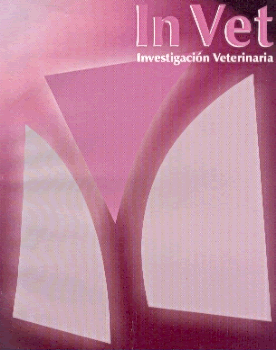Ver ítem
- xmlui.general.dspace_homeCentros Regionales y EEAsCentro Regional Santa FeEEA RafaelaArtículos científicosxmlui.ArtifactBrowser.ItemViewer.trail
- Inicio
- Centros Regionales y EEAs
- Centro Regional Santa Fe
- EEA Rafaela
- Artículos científicos
- Ver ítem
Strategic treatments with systemic biocides to control Rhipicephalus (Boophilus) microplus (Acari: Ixodidae) in northwestern Argentina = Tratamientos estratégicos con biocidas sistémicos para el control de Rhipicephalus (Boophilus) microplus (Acari: Ixodidae) en el noroeste de Argentina
Resumen
This work was performed to evaluate two different schemes of treatment with systemic biocides to control Rhipicephalus microplus in northwestern Argentina. Treatments were applied from late winter to late spring to act on the small 1st spring generation of R. microplus, precluding the rise of the larger generations of autumn. In the scheme 1, calves were treated with fluazuron on days 0 and 49, and with fipronil on day 105. In the scheme 2, calves were
[ver mas...]
This work was performed to evaluate two different schemes of treatment with systemic biocides to control Rhipicephalus microplus in northwestern Argentina. Treatments were applied from late winter to late spring to act on the small 1st spring generation of R. microplus, precluding the rise of the larger generations of autumn. In the scheme 1, calves were treated with fluazuron on days 0 and 49, and with fipronil on day 105. In the scheme 2, calves were treated with ivermectin 3.15%, fluazuron and fipronil on days 0, 28 and 83, respectively. The number of ticks observed on control group was significantly higher than the number of ticks in the treated
groups. The percentage reduction in numbers of ticks with the control scheme 1 was more than 90% during practically all study period. The treatment applied in the scheme 2 provided values of reduction higher than 90% in September, October, December, January and February, but not in November (87.49%) and March (88.78%). The results showed that both treatments schemes achieved an acceptable control level, but complementary studies are needed to determine if the R. microplus ticks detected in early autumn could increase in time to high levels.
[Cerrar]
En este trabajo se evaluaron dos esquemas de tratamientos con biocidas sistémicos para el control
de Rhipicephalus microplus en el noroeste de Argentina. Los tratamientos se aplicaron desde
fines del invierno a fines de la primavera para limitar el surgimiento de la generación con mayor
abundancia de garrapatas en el otoño del siguiente año. En el esquema 1, los terneros fueron tratados con fluazurón los días 0 y 49, y con fipronil el dìa 105. En el
[ver mas...]
En este trabajo se evaluaron dos esquemas de tratamientos con biocidas sistémicos para el control
de Rhipicephalus microplus en el noroeste de Argentina. Los tratamientos se aplicaron desde
fines del invierno a fines de la primavera para limitar el surgimiento de la generación con mayor
abundancia de garrapatas en el otoño del siguiente año. En el esquema 1, los terneros fueron tratados con fluazurón los días 0 y 49, y con fipronil el dìa 105. En el esquema 2 los terneros fueron tratados con ivermectina 3,15%, fluazurón y fipronil los días 0, 28 y 83, respectivamente. El número de garrapatas sobre el grupo control fue significativamente más alto que en los grupos tratados. El porcentaje de reducción de la carga parasitaria en el esquema 1 fue superior al 90% durante casi todo el período de estudio, y en el esquema 2 los valores fueron superiores al 90%
en septiembre, octubre, diciembre, enero y febrero, pero no en noviembre (87,49%) y marzo (88,78%). Los resultados indican que los dos esquemas de tratamientos proveen aceptables niveles de control, pero se necesitan estudios adicionales para determinar si son suficiente para suprimir el riesgo del surgimiento de un pico mayor de abundancia de R. microplus a mediados o fines del otoño.
[Cerrar]

Fuente
InVet 16 (1) : 23-30 (Jun. 2014)
Fecha
2014
Editorial
Facultad de Ciencias Veterinarias, Universidad de Buenos Aires
ISSN
1514-6634
1668-3498
1668-3498
Formato
pdf
Tipo de documento
artículo
Palabras Claves
Derechos de acceso
Abierto
 Excepto donde se diga explicitamente, este item se publica bajo la siguiente descripción: Creative Commons Attribution-NonCommercial-ShareAlike 2.5 Unported (CC BY-NC-SA 2.5)
Excepto donde se diga explicitamente, este item se publica bajo la siguiente descripción: Creative Commons Attribution-NonCommercial-ShareAlike 2.5 Unported (CC BY-NC-SA 2.5)


